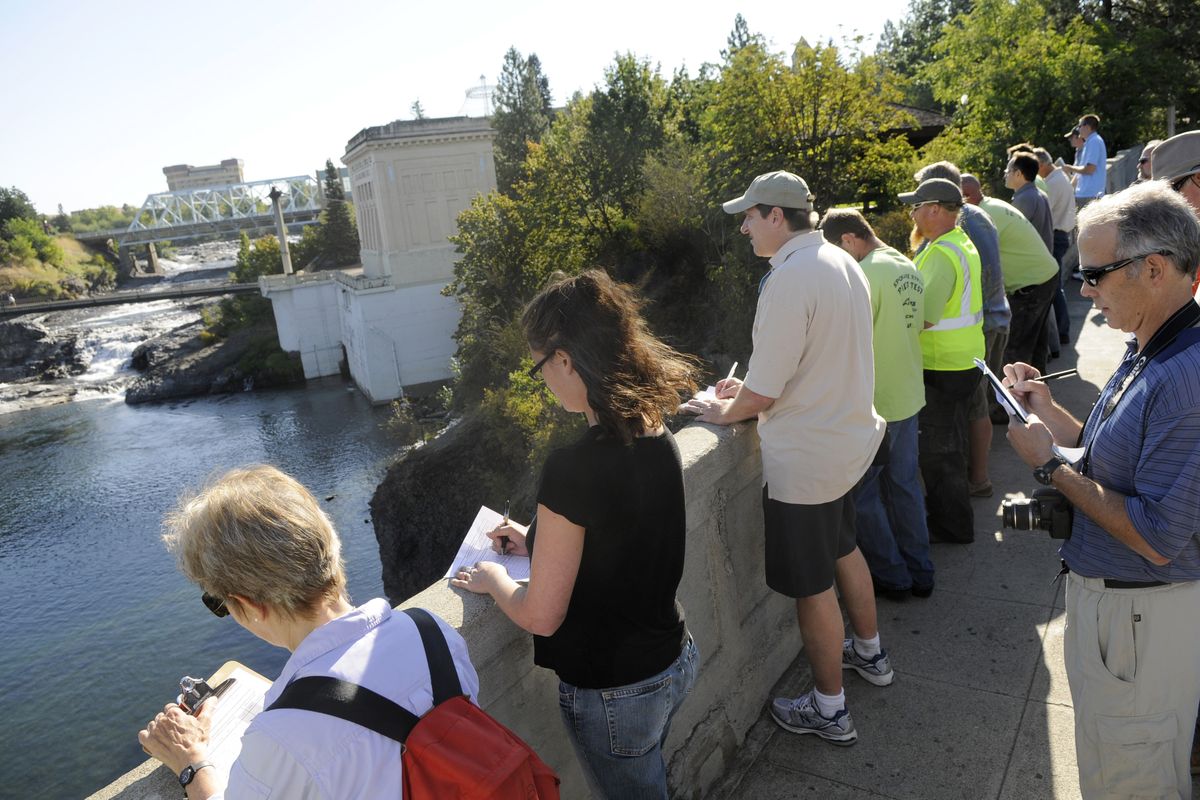Avista testing falls’ appearance with different flows

Avista is conducting tests on the Upper Spokane Falls today to determine what flows make the best-looking waterfalls.
The tests began at 8 a.m. and will continue through Thursday.
A panel is evaluating the look and sound of the falls with temporary weirs diverting water to different parts of the channel. Evaluators include representatives from the Sierra Club, the Spokane Tribe, the Washington Department of Ecology, city of Spokane, the Spokane Canoe and Kayak Club and Avista.
Last year, Avista and the Sierra Club worked out an agreement for minimum year-round flows over the falls as part of the utility’s relicensing of its Spokane River dams. The utility diverts part of the flow for electric generation at Upper Falls Dam.
The agreement calls for a baseline flow of at least 500 cubic feet of water per second over the falls, unless river flows drop below 1,000 cubic feet per second. Then, daytime flows can drop as low as 300 cubic feet per second.
By tweaking flows, however, Avista officials think they can make 300 cubic feet of water per second look and sound as pleasing as 500 cubic feet per second.
This morning, the evaluators got their first chance to check out the altered flows. The temporary weirs sent more water through the northern channel of upper falls, but the waterfalls on the southern channel weren’t as full.
“The north channel looked better, but the (south) channel looked much worse,” said John Osborn, a Sierra Club representative.
A consultant, Land Expressions of Mead, planned to tweak the flows again this afternoon during another evaluation session.
Avista, the Department of Ecology and the Sierra Club would have to mutually agree that a smaller amount of water can look as good or better to alter last year’s minimum flow agreement.
Avista officials think the effect could be achieved by filling in man-made channels in the river. The riverbed is full of canals and trenches dug for industrial diversions in the city’s early days.